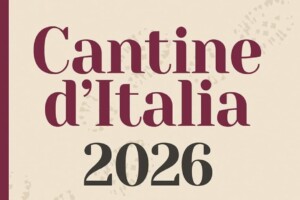Italians and wine … an extract from an opinion poll by Astra Ricerche (January 2006, professor Enrico Finzi), commissioned by the Valpolicella Wine Consortium
Wine Consumption
One out of three Italians totally abstain from drinking wine (especially between the 18-24 year age group, women, students, housewives, and southern Italians). 67% of those who do drink wine, do so only occasionally, while the remaining 40% (equal to about one fourth of the adult population) drink wine daily and often more than once a day. Heavy drinkers are most often men, 45 years and over, those with high school diplomas, those with income levels below the national average, retired, and self employed workers. But there are also entrepreneurs, directors and professionals, residents of the Triveneto. Occasional drinkers are, on average, between 18-44 years, residents in larger cities and metropolitan areas (in particular the northwest region and Rome), with high school or university degrees, with above average incomes, usually middle class or upper middle class. As well, they use internet and are capable of influencing others (opinion leaders). Overall, this signifies that over the past fifteen years the market has enlarged its quota of the population, thanks to the increase in the number of occasional drinkers in the middle range.
Wine Preferences
Red wines are the favorites of Italian consumers with 76% choosing them over white wines (which get 53% of vote). Lighter wines (57%) are preferred to more robust types (37%). Still wines (53%) are chosen over than sparkling wines (38%), just as smooth and well rounded wines are preferred (50%). But there was a head-to-head when it came to choosing between dry and sweet wines, with both tying at 47%. Though the above data made not provide any surprising novelties, a noteworthy result was the number of consumers who have returned to drinking traditional wines(64%), even those that are not trendy at the moment. It appears that since 2003 (a fact that has been confirmed by this survey) consumers have consistently moved away from the “follies” of the wine market: this is evidenced by the fact that 65% of drinkers have made it clear that they prefer products at an honest price. At the same time, however, the requests for quality wines, guaranteed by producers and by regions, remain high: 63% of consumers prefer wines with DOC and IGT quality seals, not only as guarantee of territorial origin (or the assurance of a particular varietal mix, production methods, and results), but also as certification of quality. Only one third (34%) affirm that they prefer certain brand names, while those who choose local products (58%) are on the rise. Drinking exclusively one type of wine is rare, with consumers largely preferring to experiment with different types (56%). Interesting aside: red wine drinkers seem to be more knowledgeable of and curious about the wine culture. And for the first time they seem to prefer, overall, less robust wines, with personality but easier to drink and digest. Wines that are not excessively expensive or trendy and are easily accessible on the market.
Occasions for Drinking
Celebrations, holidays, and birthdays, i.e. special occasions, are the main moments for enjoying a glass of wine (with 72% of consumers participating at these times). But drinking wine with meals is still an important part of the drinking culture (69% drink wine regularly or occasionally with meals). 39% frequently consume wine when eating out (an increased percentage that must, however, take into account that 53% of consumers have now begun to eat away from home). The number of those who drink wine as an aperitivo is much lower at 13%, and consumption in wine bars is 11%. While only 8% of consumers drink wine after dinner.
Consumption of regional Italian red wines
Obviously the red wines consumed by Italians come from various regions: the classification puts Tuscany and Umbria at the head of the classification at 43%, Piedmont comes in second at 39%, the Veneto third with 32%, and Sicily fourth (30%). The top four are followed by Emilia-Romagna (28%), Puglia (23%), Lombardy (20%), Trentino-Alto Adige (17%), Friuli-Venezia Giulia (16%), and Sardinia, Campania, and Abruzzo - Molise all with 15%, followed by Lazio (13%) and the Marche (8%). All of the other regions hold a fairly insignificant part of the total. The classification changes a bit if calculated according to wine sector experts. Though Tuscany and Umbria still hold first place (45%), and Piedmont second (41%), Sicily moves up to third with 28%, surpassing the Veneto region (25%), followed by Puglia (20%), Emilia-Romagna (18%), Lombardy and the Trentino-Alto Adige (both with 13%), Sardinia and Friuli (both 12%), followed by Abruzzo and Molise (10%), Campania (9%), L(8%), and the Marche (6%). These two different classifications demonstrate that in just four regions (in descending order Tuscany, Umbria, Piedmont, and Sicily) the growing perception of prestige and success surpasses consumption, while in the other six regions it is the opposite (Emilia-Romagna, Lombardy, Campania, Abruzzo, Molise, and Lazio).
Copyright © 2000/2025
Contatti: info@winenews.it
Seguici anche su Twitter: @WineNewsIt
Seguici anche su Facebook: @winenewsit
Questo articolo è tratto dall'archivio di WineNews - Tutti i diritti riservati - Copyright © 2000/2025








































































































































































































